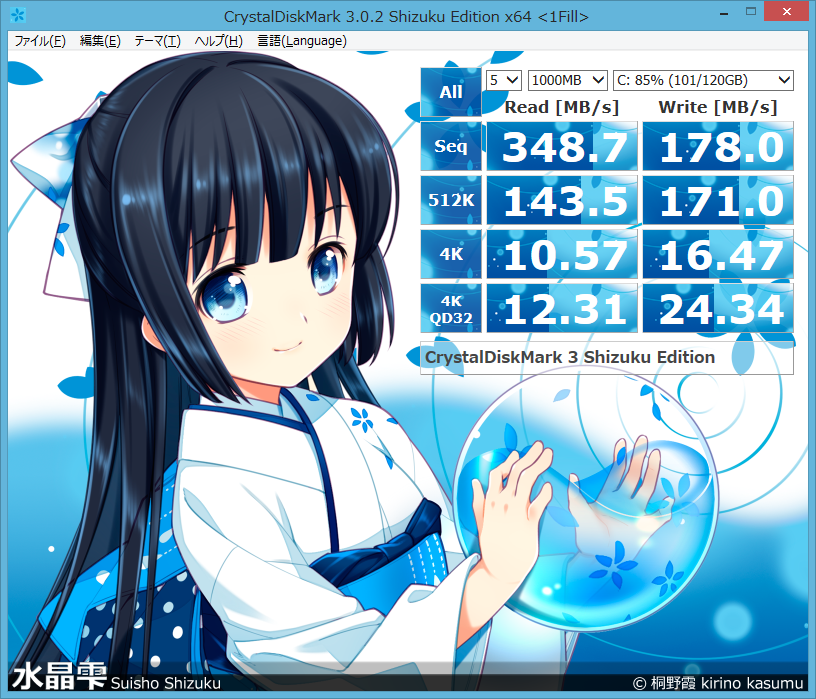

Other changes include preventing the program from running without elevated administrator privileges, a new option to change the program’s fonts to suit personal tastes (Theme > Font Setting) and the addition of an ARM64 build for compatible processors. The sequential benchmark block size has been increased from 128KB to 1MB while the random benchmark switches from Q8T8 to QT32T16. When selected, users will see a new dropdown menu allowing them to specify the split between read/write as a percentage. Version 7 throws in a new mixed read/write test to accompany the standard standalone read and write tests, which in turn leads to new peak and real-world performance profiles.

It retains its simplicity however - select your drive, choose your test settings and click ‘All’ to run them all or select a specific test to run. Version 7 opens with a rebuilt user interface - subtly tweaked during the transition from HTML to GDI. CrystalDiskMark will appeal to users quickly wishing to benchmark their hard drives, whether it’s to gauge current performance or see if that new NVMe SSD drive really is that much quicker than traditional SATA-based models.


 0 kommentar(er)
0 kommentar(er)
